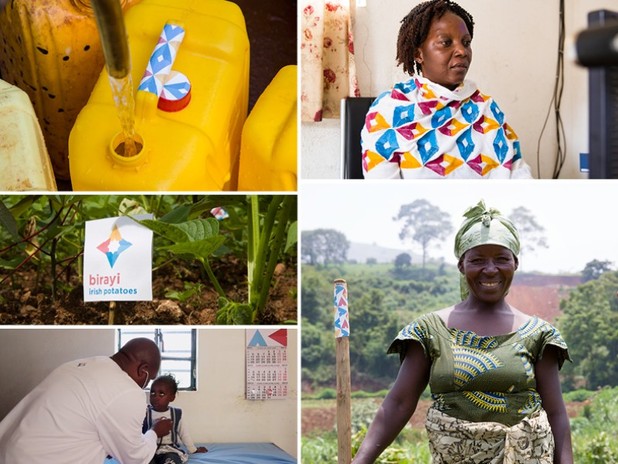December 04, 2013
IDEO.org Communications Designer, Stacy Barnes, explains the pieces that her team created in order to design a social enterprise zone with the American Refugee Committee (ARC), addressing improved health for communities in the Democratic Republic of Congo.
At the start of this project, our IDEO.org design team was given the extensive challenge of creating a social enterprise zone in the Democratic Republic of Congo (DRC). The goal of this enterprise zone was to reduce under-five child mortality by creating a functioning business. Through numerous interviews, community co-design sessions, and community-led prototyping over the course of 12 weeks, we quickly understood that there were multiple pieces that needed to come together in order to make a social enterprise work.
We needed to create:
1. A holistic service model that weaved together each branch of the enterprise. Water, health, nutrition, and agriculture would be the services the pilot launched with – but we were also creating a platform that was flexible enough to incorporate new services like electricity or education, as well, as the enterprise grows.
2. An overarching vision for the brand that would allow customers to recognize these seemingly disparate services as one cohesive unit. In order to do that we would need to design a physical mark (logo) and brand language, as well as define what the values of this enterprise are, in order to guide employees, management, and ultimately allow our customers to recognize us for these unique qualities.
3. Develop a detailed business model that clearly establishes how this enterprise would operate and what our partner, the American Refugee Committee (ARC), would need to do in order to make it a reality.
Service
The service model that our design team produced covered four pilot enterprises – water, health, nutrition, and agriculture. Families can sign up for a membership or pay for services as they need them. An Asili membership costs 3 USD a month and includes these benefits: daily water, healthcare for children under five years of age at no additional charge at the clinic, and discounted medical visits and medicine for the entire family. Members also receive discounts on high-quality nutritional seeds. Non-members can access all of these services, they simply do not receive the discounts on medical visits, medicines, and seeds. They also pay a small fee for medical visits to the clinic for children under five years of age.
This system of social enterprises, as a whole, is structured as a simple replicable model allowing more services to be added in the future, such as electricity, education, or sanitation. The service plan presented to our client and partners covers everything from the customer journey to the roles and responsibilities of the staff members. An important role incorporated into the service model is the role of advocates – strong community leaders that act as the face of Asili within the community. They make sure members' voices, thoughts, and feedback are incorporated into every aspect of how the brand portrays itself, how the service works and grows, and how the business will operate.
Brand
Creating the brand surrounding these enterprises was equally as important as the services Asili offers. The brand is the tangible connection among the three different services, it is the representation people will come to know, and most importantly, the brand is the way we physically document and communicate the core values of Asili. These core values are: 1) maintaining a deep connection to the community, 2) delivering consistency in all of our services and customer interactions, and 3) providing clarity and transparency around every decision we make.
To create a visual mark that celebrates and represents all of the things we discovered in the field, we drew on the importance of the community by representing the colors and shapes of the DRC flag within the logo itself. The logo also brings multiple pieces together to form the whole, just as our enterprise zone brings together multiple services. In order to truly respect throughts and opinions of the community, we used the co-participatory design sessions with community members as the key to identifying the final brand, look, feel, promise to customers, and brand values.
Business
Asili becomes "real" through the business model; this is because it tells us what will work and what won't. It is one of the most important pieces to address when communicating design solutions with our client and partner organizations. Our research phase focused on understanding what people can afford and building a model that could feasibly accommodate these members – a much more "ground-up" approach than normal business modeling, which can use a "top-down" approach starting with the market size. But keeping our original design brief in mind, we knew that our business needed to reach the most vulnerable populations. Understanding the gaps between the costs of the services and what customers could reasonably afford allowed us to identify for our client where additional funding may be needed.
We built an extensive business model that allows our client to run multiple scenarios across all service offerings ensuring they understand the impact of an integrated service offering run under one roof.
Take a look at the overview of Asili in the executive summary of our deliverable, or better yet get an inside peek at the enterprise by watching this video. For the entire Asili Blueprint document check back in the coming weeks.







